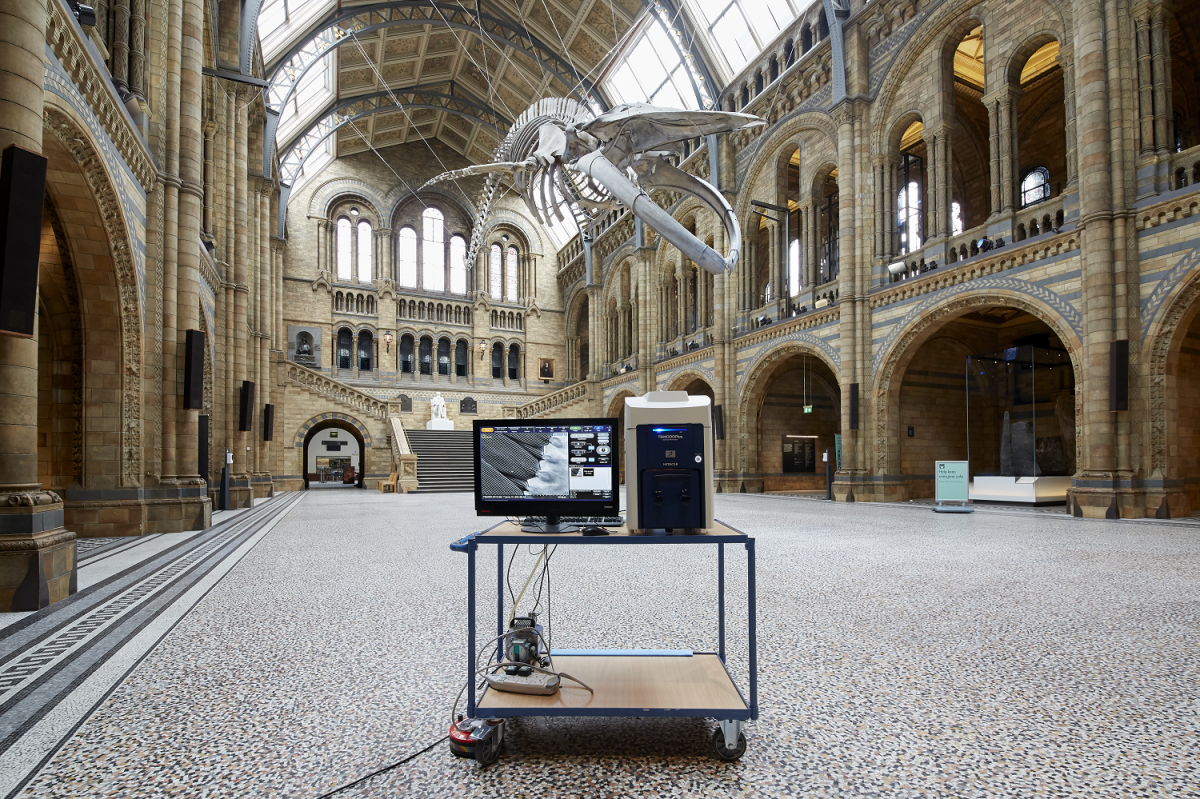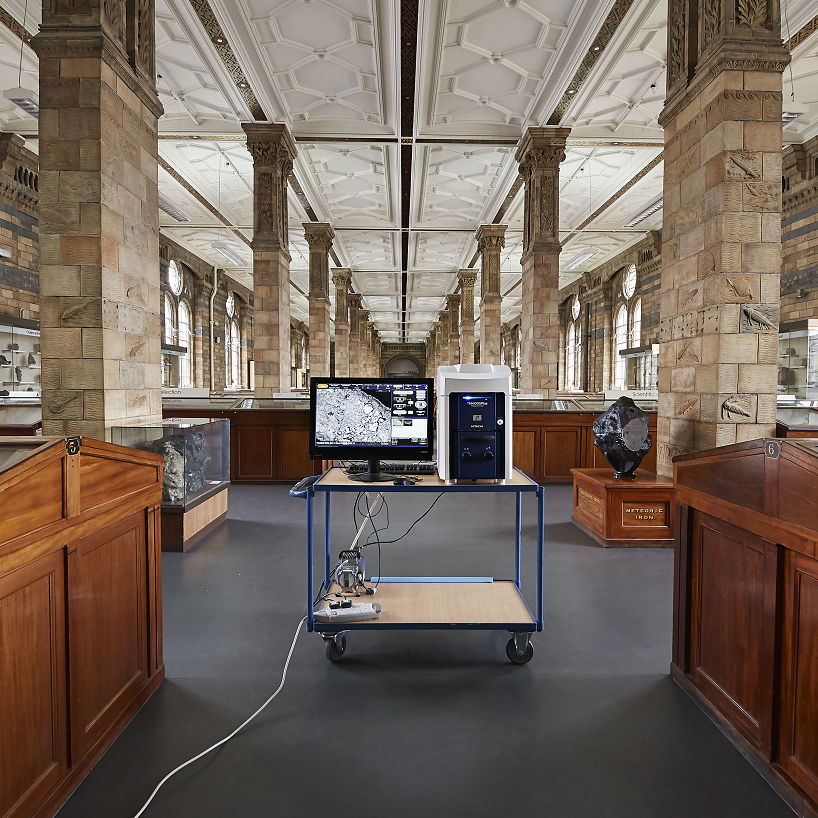20 January 2022
Inspiring the next generation of researchers
~ STEM education project gives students unique opportunity to experience scientific research ~
A new STEM outreach project saw 6,000 students from 46 schools given the chance to use high-level scientific instruments to carry out their own experiments. Leading manufacturer of scientific equipment, Oxford Instruments, contributed to the project, providing an AZtecLive One Xplore energy dispersive X-ray system (EDS) to give the students an in depth experience of STEM research. The pilot was carried out during the summer of 2021 as part of the Hitachi High-Tech America Inspire STEM Education Outreach Programme in the UK, and saw students use scanning electron microscopes (SEMs).
The project was proposed by Dr Alex Ball of the Natural History Museum (NHM), London, and Dr James Perkins of Queen Elizabeth Grammar School in Kent. Portable Hitachi TM4000 SEMs were provided to the participating schools for use in scientific demonstrations and experiments, and teacher training was delivered to allow staff to train students and carry out maintenance.

The project aimed to instil an interest in STEM in the students taking part by allowing them direct access to real scientific instrumentation. A total of 46 schools were involved in the project, either directly as SEM hosts, or indirectly through visiting other institutions to use the equipment.
In support of this collaborative project, Oxford Instruments provided an AZtecLive One Xplore EDS system for use with the Hitachi TM4000 SEM, along with training and technical support on their analytical software to ensure the schools could use the features to their full potential. The SEMs and remote training were provided by Hitachi High-Tech America Inspire STEM Education Outreach Program. The Royal Microscopical Society (RMS) acted as an organisational base, while the Institute for Research in Schools (IRIS) provided a point of contact for schools wishing to submit proposals.

The AZtecLive One Xplore EDS system provided by Oxford Instruments requires minimal training, allowing students and teachers to benefit from additional experience in scientific analysis. The SEM provided to the schools was the Hitachi TM4000Plus portable electron microscope with secondary and backscattered electron detectors, able to magnify samples up to 250.000x. Scanning electron microscopy is an invaluable tool for examining the sample surfaces, but incorporating EDS capabilities allows operators to chemically analyse a sample.
“The host schools used the SEMs in a variety of ways. Projects included the investigation of diatoms as environmental indicators in water systems, and whether flour is truly vegan by examining commercially available flour for identifiable traces of insects,” said Dr Alex Ball. “The SEMs have also been used to study biomimicry in biological structures, and in comparative studies of insects. Other experiments carried out by teachers and students included spectroscopic analysis of antique coins, and investigations into microstructures of different metals. This wide range of projects highlights the diverse applications of microscopy and chemical analysis.”
“Oxford Instruments has a commitment to helping young people at all stages of their education, so we were delighted to get involved with this important project”, says Christian Lang, Oxford Instruments NanoAnalysis marketing director. “The number of students that have been introduced to the possibilities of working with high-technology scientific instrumentation in such a short period of time, and the enthusiasm with which they have embraced the experience, is remarkable and this can only be a positive influence on inspiring the next generation of young scientists and engineers.”
The project was an overwhelming success, with resoundingly positive feedback from all who took part. The level of engagement from the students, teachers and technical staff proves just how exciting and important this experience was. Projects such as this can help to break down the barriers to STEM that young people often experience and give them the opportunity to practically engage with STEM subjects at an earlier age outside of a classroom setting. The project not only gave the participants a new set of skills and the ability to think more analytically, but it also gave them an insight to just how exciting science can be.

